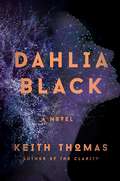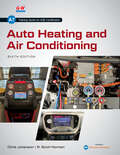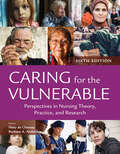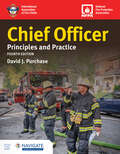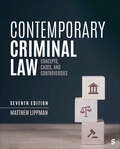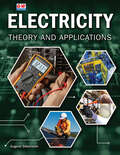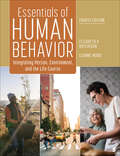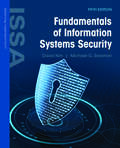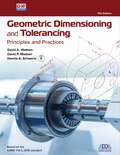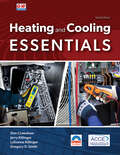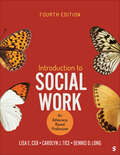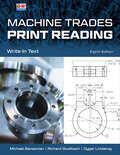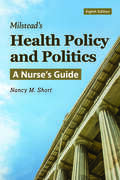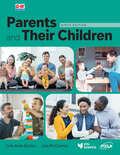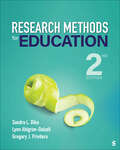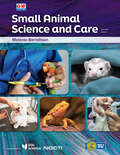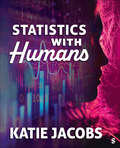- Table View
- List View
Dahlia Black
by Keith ThomasFor fans of World War Z and the Southern Reach Trilogy, a suspenseful oral history commemorating the five-year anniversary of the Pulse—the alien code that hacked the DNA of Earth’s population—and the response team who faced the world-changing phenomenon. <p><p>Voyager 1 was a message in a bottle. Our way of letting the galaxy know we existed. That we were out here if anyone wanted to find us. Over the next forty years, the probe flew past Jupiter and Saturn before it drifted into the void, swallowed up by a silent universe. Or so we thought… <p><p>Truth is, our message didn’t go unheard. Discovered by Dr. Dahlia Black, the mysterious Pulse was sent by a highly intelligent intergalactic species that called themselves the Ascendants. It soon becomes clear this alien race isn’t just interested in communication—they are capable of rewriting human DNA, in an astonishing process they call the Elevation. <p><p>Five years after the Pulse, acclaimed journalist Keith Thomas sets out to make sense of the event that altered the world. Thomas travels across the country to interview members of the task force who grappled to decode the Pulse and later disseminated its exact nature to worried citizens. He interviews the astronomers who initially doubted Black’s discovery of the Pulse—an error that critics say led to the world’s quick demise. Thomas also hears from witnesses of the Elevation and people whose loved ones vanished in the Finality, an event that, to this day, continues to puzzle Pulse researchers, even though theories abound about the Ascendants’ motivation. <p><p>Including never-before-published transcripts from task force meetings, diary entries from Black, and candid interviews with Ballard, Thomas also shows in Dahlia Black how a select few led their country in its darkest hours, toward a new level of humanity.
Abafana ababili abalambile
by Clare Verbeek Thembani Dladla and Zanele ButheleziIsiZulu — First words
Auto Heating and Air Conditioning
by Chris Johanson R. Scott NormanAuto Heating and Air Conditioning is a comprehensive text that focuses on operation, diagnosis, and service topics. It contains detailed information on refrigeration, heating, and engine cooling system components; climate control electronics; refrigerant handling; and both manual and automatic temperature control systems. The text also emphasizes proper refrigerant recovering and recycling practices. Correlated to the Heating and Air Conditioning section of the latest ASE Education Foundation Task List, this text is a valuable resource for anyone preparing for ASE Certification Test A7, Heating and Air Conditioning. This new sixth edition has been reorganized with a new chapter sequence for a better flow of information, presents technical information in an easy-to-understand manner, and features an exciting new design with many new photos and color-keyed illustrations. Digital users have access to the eBook content, online workbook, online shop manual, multimeter simulations, Virtual Toolbox, interactive activities, and MotoVisuals from Advance Auto Parts.
Caring for the Vulnerable: Perspectives in Nursing Theory, Practice, and Research
by Barbara A. Anderson Mary de ChesnayLead editors and authors, Mary de Chesnay and Barbara Anderson, continue to offer a timely and comprehensive examination of the many facets of vulnerability in health and healthcare delivery in an updated sixth edition of Caring for the Vulnerable: Perspectives in Nursing Theory, Practice, and Research. Caring for vulnerable populations presents unique challenges, and nursing students need a resource that teaches them how to understand and recognize those who are vulnerable, address their vulnerability, and implement strategies that support their healthcare needs. This book provides a wealth of information for clinicians who care for a variety of vulnerable populations. Chapters cover concepts and theories, research, practical applications, and policy-making for a well-rounded look at how nurses and clinicians can provide optimal patient-centered care and support for vulnerable populations. Thoroughly revised with 20 NEW chapters on relevant information and cases. Updated to include discussions on timely topics including the use of AI in health care, human trafficking, and the 2024 McGinley-Rice symposium. Contributors across varying fields provide interprofessional perspectives. Concepts and theories provide a foundation for clinicians to understand ways to reduce disparities and promote social justice. Vignette-style chapters cover a broad scope of issues and provide a close look at real-life scenarios a clinician may encounter. Instructor resources include an Instructor's Manual (containing essay questions, sample answers, fieldwork exercises, and student fieldwork samples), Slides in PowerPoint format, and a Test Bank. Ideal for upper-level undergraduate courses as well as graduate-level population health, health promotion, and global health courses in both MSN and DNP programs. © 2026 | 500 pages
Chief Officer: Principles and Practice
by David PurchaseThe Jones & Bartlett Learning Public Safety Group, in partnership with The National Fire Protection Association (NFPA) and the International Association of Fire Chiefs (IAFC), is pleased to present the fourth edition of Chief Officer: Principles and Practice. Revised to address chief officers’ most pressing challenges today, this edition has been updated to meet Chapters 11: Fire Officer III (NFPA 1021) and 12: Fire Officer IV (NFPA 1021) of NFPA 1020, Standard for Fire and Emergency Services Instructor, Fire Officer, and Emergency Medical Services Officer Professional Qualifications, 2025 Edition. Chief Officer: Principles and Practice, Fourth Edition enables future chief officers to skillfully transition from company officers to the problem-solving leaders their organization needs to take on everyday challenges in their community. Instructors and learners will find a clear division of Fire Officer III and IV content, chapters organized to communicate content clearly and reinforce critical concepts throughout the text, engaging case studies, and new content that every chief officer should know. New to the fourth edition: Chapters featuring discussion questions to spark debate, review questions for self-assessment, case studies to promote critical thinking, and summaries listing the NFPA job performance requirements (JPRs) as well as the knowledge and skill objectives needed for student competency Correlation grid featuring the job performance requirements (JPRs) from Chapters 11 and 12 of NFPA 1020, the detailed chapter knowledge and skill objectives, and the chapters and page numbers where the JPRs are covered Updated content on professional development, communications, legal issues, human resources, government relations, budget and finance, community relations, code enforcement, community risk reduction, personnel management at the executive level, executive level planning, and disaster management Updated National Fallen Firefighters Foundation Life Safety Initiatives New discussion on identifying courses and programs to assist employees in meeting their professional development goals New legal discussions on civil and criminal cases, stages of a lawsuit, elements of a binding contract, laws governing EMS best practices, Firefighter Bill of Rights, providing accommodations, records retention, cyberlaw, and more New discussions on evaluations and the promotion process New discussions on budget reductions and cost recovery programs New discussions on briefing public officials, post-incident analysis (PIA) data, and using organizational benchmarks New discussions on cybersecurity and fire service threats Much more! Chief Officer: Principles and Practice, Fourth Edition with Navigate Advantage Access is a print and digital solution that includes access to the following learning materials to help fire students engage in their learning and succeed in their careers as chief officers: Print textbook Interactive eBook Audiobook Lesson outlines Learning objectives Flashcards TestPrep Prepare your chief officer candidates with the knowledge and skills they need to lead fire organizations through the challenges that the highest-ranked officers face every day.
Contemporary Criminal Law: Concepts, Cases, and Controversies
by Matthew LippmanProviding a current view that encourages students to read, analyze, and think critically, Contemporary Criminal Law: Concepts, Cases, and Controversies, Seventh Edition blends foundational concepts from undergraduate criminal law courses with thought-provoking cases and engaging learning tools. Covering emerging legal topics such as the legalization of marijuana, sextortion, ransomware, health care fraud, trafficking, and insurrection, the text uses real-life examples that students can recognize and connect with. Author Matthew Lippman clearly defines and explains criminal law and defenses while providing cases and discussion questions designed to stimulate critical thinking and in-class discussion. Students are encouraged to actively engage with the text through pedagogical features, making decisions based on factual cases and analyzing the complexities of the legal system. This text is offered in Sage Vantage, an intuitive learning platform that integrates quality Sage textbook content with assignable multimedia activities and auto-graded assessments to drive student engagement and ensure accountability. Unparalleled in its ease of use and built for dynamic teaching and learning, Vantage offers customizable LMS integration and best-in-class support.
Contemporary Criminal Law: Concepts, Cases, and Controversies
by Matthew LippmanProviding a current view that encourages students to read, analyze, and think critically, Contemporary Criminal Law: Concepts, Cases, and Controversies, Seventh Edition blends foundational concepts from undergraduate criminal law courses with thought-provoking cases and engaging learning tools. Covering emerging legal topics such as the legalization of marijuana, sextortion, ransomware, health care fraud, trafficking, and insurrection, the text uses real-life examples that students can recognize and connect with. Author Matthew Lippman clearly defines and explains criminal law and defenses while providing cases and discussion questions designed to stimulate critical thinking and in-class discussion. Students are encouraged to actively engage with the text through pedagogical features, making decisions based on factual cases and analyzing the complexities of the legal system. This text is offered in Sage Vantage, an intuitive learning platform that integrates quality Sage textbook content with assignable multimedia activities and auto-graded assessments to drive student engagement and ensure accountability. Unparalleled in its ease of use and built for dynamic teaching and learning, Vantage offers customizable LMS integration and best-in-class support.
Electricity: Theory and Applications
by Eugene SilbersteinElectricity: Theory and Applications provides valuable insight into the electrical theories and concepts that form a solid foundation of knowledge, onto which more advanced learning and understanding can be structured. Designed for foundational electrical theory courses in electrical technology, construction, and industrial maintenance programs, the textbook features a clear and simple presentation of concepts and many illustrations.
EnVision California Mathematics, Grade 6, Volume 1
by Jennifer Bay-Williams Robert Q. Berry Zak ChampagneNIMAC-sourced textbook
Essentials of Human Behavior: Integrating Person, Environment, and the Life Course
by Elizabeth D. Hutchison Leanne WoodEssentials of Human Behavior by Elizabeth D. Hutchison and Leanne Wood integrates the key framework of time, person and environment into a single streamlined text for single or double semester courses. Drawn from Hutchison′s best-selling Dimensions of Human Behavior texts, this Fourth Edition is updated to address equity and inclusion, trauma and resilience, environmental justice, and gender identity and expression. With a multidimensional approach, it helps students connect human behavior theories and research to their applications in social work engagement, assessment, intervention, and evaluation across all levels of practice. This text is offered in Sage Vantage, an intuitive learning platform that integrates quality Sage textbook content with assignable multimedia activities and auto-graded assessments to drive student engagement and ensure accountability. Unparalleled in its ease of use and built for dynamic teaching and learning, Vantage offers customizable LMS integration and best-in-class support. Instructors, see how Vantage works! Take a self-guided tour with our interactive demo
Essentials of Human Behavior: Integrating Person, Environment, and the Life Course
by Elizabeth D. Hutchison Leanne WoodEssentials of Human Behavior by Elizabeth D. Hutchison and Leanne Wood integrates the key framework of time, person and environment into a single streamlined text for single or double semester courses. Drawn from Hutchison′s best-selling Dimensions of Human Behavior texts, this Fourth Edition is updated to address equity and inclusion, trauma and resilience, environmental justice, and gender identity and expression. With a multidimensional approach, it helps students connect human behavior theories and research to their applications in social work engagement, assessment, intervention, and evaluation across all levels of practice. This text is offered in Sage Vantage, an intuitive learning platform that integrates quality Sage textbook content with assignable multimedia activities and auto-graded assessments to drive student engagement and ensure accountability. Unparalleled in its ease of use and built for dynamic teaching and learning, Vantage offers customizable LMS integration and best-in-class support. Instructors, see how Vantage works! Take a self-guided tour with our interactive demo
Fundamentals of Information Systems Security
by David Kim Michael G. SolomonThe cybersecurity landscape is evolving, and so should your curriculum. Fundamentals of Information Systems Security, Fifth Edition helps instructors teach the foundational concepts of IT security while preparing students for the complex challenges of today’s AI-powered threat landscape. This updated edition integrates AI-related risks and operational insights directly into core security topics, providing students with the tools to think critically about emerging threats and ethical use of AI in the classroom and beyond. The Fifth Edition is organized to support seamless instruction, with clearly defined objectives, an intuitive chapter flow, and hands-on cybersecurity Cloud Labs that reinforce key skills through real-world practice scenarios. It aligns with CompTIA Security+ objectives and maps to CAE-CD Knowledge Units, CSEC 2020, and the updated NICE v2.0.0 Framework. From two- and four-year colleges to technical certificate programs, instructors can rely on this resource to engage learners, reinforce academic integrity, and build real-world readiness from day one. Features and Benefits Integrates AI-related risks and threats across foundational cybersecurity principles to reflect today’s threat landscape. Features clearly defined learning objectives and structured chapters to support outcomes-based course design. Aligns with cybersecurity, IT, and AI-related curricula across two-year, four-year, graduate, and workforce programs. Addresses responsible AI use and academic integrity with reflection prompts and instructional support for educators. Maps to CompTIA Security+, CAE-CD Knowledge Units, CSEC 2020, and NICE v2.0.0 to support curriculum alignment. Offers immersive, scenario-based Cloud Labs that reinforce concepts through real-world, hands-on virtual practice. Instructor resources include slides, test bank, sample syllabi, instructor manual, and time-on-task documentation.
Geometric Dimensioning and Tolerancing: Principles and Practices
by David A. Madsen David P. Madsen Dennis A. SchwartzGeometric Dimensioning and Tolerancing provides thorough coverage of GD&T practices as established by the ASME Y14.5–2018 standard. From understanding symbols on existing drawings to calculating the tolerances for proper size and location of features, topics are introduced in a methodical manner to establish an understanding of basic concepts before building to more advanced applications. The use of second color in this heavily illustrated text enhances learning by highlighting callouts and labels separately from the symbols and text of each drawing.
Heating and Cooling Essentials
by Don Crawshaw Jerry Killinger LaDonna Killinger Gregory D. SmithHeating and Cooling Essentials is the ideal introductory text for students entering the HVACR field, presenting a unique and focused approach to fundamental theory, applications, and skills. This text emphasizes the techniques needed to perform installation, service, and repair of refrigeration, air conditioning, and heating systems. Students build an understanding of how HVACR systems work and progress into troubleshooting and service. This new sixth edition has been updated to reflect coverage of relevant industry changes such as zeotropic refrigerants, A2L refrigerants and related equipment, smart thermostats, and more modern coverage of heat pump systems. A new chapter on safety covers essential safety guidelines and industry hazards relevant to introductory HVACR students.
Introduction to Social Work: An Advocacy-Based Profession
by Carolyn J. Tice Dennis D. Long Lisa E. CoxThe best-selling Introduction to Social Work guides students through the foundations of social work—it’s history, purpose and how to become practical and effective advocates in the field. Built on a unique advocacy practice and policy model with four key components–economic and social justice, a supportive environment, human needs and rights, and political access—this text offers a crucial lens for addressing today’s social issues. Authors Lisa E. Cox, Carolyn J. Tice, and Dennis D. Long emphasize advocacy across all sectors of social work, addressing pressing issues such as immigration, poverty, health care, social policy, and environmental challenges. The Fourth Edition closely aligns with the latest Educational Policy and Accreditation Standards (EPAS) from the Council on Social Work Education (CSWE), references the Code of Ethics from the National Association of Social Workers (NASW). It encourages students to explore their personal role as future social workers in driving systemic change, challenging oppression, and uplifting marginalized individuals, families, groups, and communities. This text is offered in Sage Vantage, an intuitive learning platform that integrates quality Sage textbook content with assignable multimedia activities and auto-graded assessments to drive student engagement and ensure accountability. Unparalleled in its ease of use and built for dynamic teaching and learning, Vantage offers customizable LMS integration and best-in-class support.
Introduction to Social Work: An Advocacy-Based Profession
by Carolyn J. Tice Dennis D. Long Lisa E. CoxThe best-selling Introduction to Social Work guides students through the foundations of social work—it’s history, purpose and how to become practical and effective advocates in the field. Built on a unique advocacy practice and policy model with four key components–economic and social justice, a supportive environment, human needs and rights, and political access—this text offers a crucial lens for addressing today’s social issues. Authors Lisa E. Cox, Carolyn J. Tice, and Dennis D. Long emphasize advocacy across all sectors of social work, addressing pressing issues such as immigration, poverty, health care, social policy, and environmental challenges. The Fourth Edition closely aligns with the latest Educational Policy and Accreditation Standards (EPAS) from the Council on Social Work Education (CSWE), references the Code of Ethics from the National Association of Social Workers (NASW). It encourages students to explore their personal role as future social workers in driving systemic change, challenging oppression, and uplifting marginalized individuals, families, groups, and communities. This text is offered in Sage Vantage, an intuitive learning platform that integrates quality Sage textbook content with assignable multimedia activities and auto-graded assessments to drive student engagement and ensure accountability. Unparalleled in its ease of use and built for dynamic teaching and learning, Vantage offers customizable LMS integration and best-in-class support.
Intruder
by Michael GandyThe Vice President’s daughter is granted time at Camp David to work on her doctoral dissertation. But her time out there is interrupted by an intrusion of a most deadly nature, the revelation of a military conspiracy against the presidency itself.
Machine Trades Print Reading
by Michael A. Barsamian Richard A. Gizelbach Oygar LindskogMachine Trades Print Reading is a combination text and write-in workbook—now in four color—designed to help students develop the basic skills required to visualize and interpret industrial prints. Ideal for beginner students, this text provides basic explanations supported by numerous print reading activities. The instructional materials, illustrations, and industrial prints are presented in a step-by-step sequence. This edition includes expanded, up-to-date coverage of GD&T and complies with the most recent ASME Y14 standards. In addition to an overview of the role of prints in the design and manufacturing process, this text teaches students the fundamentals of visualizing shapes, line usage, title blocks and notes, math, measurement, dimensions, and tolerances.
Milstead's Health Policy and Politics: A Nurse's Guide
by Nancy M. ShortUS health policy changes rapidly as legislation and case law change. However, the policy process does not. Milstead's Health Policy and Politics: A Nurse's Guide, Eighth Edition focuses on the policymaking process and the impact it has on nursing and healthcare. It is an excellent resource for nursing students as it encompasses the entire health policy process from agenda setting through policy and program evaluation. The author and interprofessional team of contributors interpret past events to help readers develop the knowledge, skills, and abilities necessary to influence health policy in the US. The updated Eighth Edition features a new chapter on community engagement and education in regard to policy process, along with new Spotlights and Case Studies throughout. It also includes new sections on current topics, including types of Media and the Role of AI in Media, EHR as an important source of big data, Research as a Driver of Agendas, The Foundations for Evidence-Based Policymaking Act of 2018, and more. With Milstead's Health Policy and Politics: A Nurse's Guide, Eighth Edition, students will understand the policymaking process and have the confidence knowing they can play a role in shaping US health policy. Presents a targeted focus on the policy process and where nurses can begin to effect policy changes. Provides concrete examples of real-life situations that help students understand the link between nursing, policy theory, and political action. Features Case studies and Discussion Points in every chapter to explain the policy process in plain language. Every new copy is packaged with Navigate Premier Access featuring the complete eBook, Interactive Lectures, Slides in PowerPoint format, Case Studies, and Discussion Questions. Instructor resources include an Instructor's Manual, Syllabus, Competency Mapping, Answer Keys to the Case studies and Discussion Questions, Test Bank, and Sides in PowerPoint format. Health Policy Health Policy & Finance © 2026 | 350 pages
Parents and Their Children
by Dr Celia A. Decker Julia McClannonParents and Their Children explores the essential roles, decisions, and challenges of parenting and family life, highlighting how families are formed, the responsibilities of parents, and the many factors that shape children’s development and well-being. The decision to become a parent should be carefully planned, considering personal readiness, finances, health, and relationship stability. Families come in diverse forms—nuclear, single-parent, stepfamilies, extended, and more—each with unique strengths and challenges. This text contains diverse photos and inclusive language.
Research Methods for Education
by Lynn Ahlgrim-Delzell Gregory J. Privitera Sandra DikaResearch Methods for Education, Second Edition employs a conversational tone to frame research as a logical, step-by-step process of making research decisions. Helping students translate their complex educational research questions into a plan for a research project, the text focuses on applying scientific methods in real-world educational contexts. Authors Sandra L. Dika, Lynn Ahlgrim-Delzell, and Gregory J. Privitera show how methods and analysis work together to create credible, reliable, and valid quantitative, qualitative, and mixed methods educational research. Chapters logically follow the research design and analysis process as in the first edition, with a focus on ethics, measurement, literature reviews, and participant selection before moving through various research designs, including nonexperimental, quasi-experimental, experimental, qualitative, and mixed methods. Significant updates include a restructured table of contents with more emphasis on quasi-experimental research and single-case designs and more logical flow of content. New sections on validity incorporate national standards, while more clarification of qualitative and mixed methods designs helps students better understand these approaches. Throughout, new educational examples and data have been added, as well as updates for the APA 7th edition guidelines.
Research Methods for Education
by Lynn Ahlgrim-Delzell Gregory J. Privitera Sandra DikaResearch Methods for Education, Second Edition employs a conversational tone to frame research as a logical, step-by-step process of making research decisions. Helping students translate their complex educational research questions into a plan for a research project, the text focuses on applying scientific methods in real-world educational contexts. Authors Sandra L. Dika, Lynn Ahlgrim-Delzell, and Gregory J. Privitera show how methods and analysis work together to create credible, reliable, and valid quantitative, qualitative, and mixed methods educational research. Chapters logically follow the research design and analysis process as in the first edition, with a focus on ethics, measurement, literature reviews, and participant selection before moving through various research designs, including nonexperimental, quasi-experimental, experimental, qualitative, and mixed methods. Significant updates include a restructured table of contents with more emphasis on quasi-experimental research and single-case designs and more logical flow of content. New sections on validity incorporate national standards, while more clarification of qualitative and mixed methods designs helps students better understand these approaches. Throughout, new educational examples and data have been added, as well as updates for the APA 7th edition guidelines.
Small Animal Science and Care
by Melanie BerndtsonSmall Animal Science and Care provides today’s educators and their students with a new and refreshing comprehensive resource for this growing industry, covering topics that are timely and relate to student interests, such as animal welfare, the roles of animals in society, animal nutrition, and pet first aid. This fresh approach to small animal care appeals to and engages today’s high school students with up-to-date information and full-color images. The text also introduces students to a range of careers available in the small animal industry through real-life SAE for All Profiles and Career Connections that include education requirements and current salary ranges. This title helps students develop a deeper understanding of career opportunities, industry expectations, and knowledge and skills related to the care of small animals to prepare for entry-level positions in the industry or for more advanced studies in veterinary science.
Statistics With Humans
by Katie A. JacobsStatistics With Humans teaches depth of understanding and application of foundational concepts in statistics for the social and behavioral sciences. By translating her passion and energy for teaching into the book, author Katie Jacobs makes statistics approachable and understandable for even the most math-phobic student. Drawing on examples from students’ everyday lives and written in a friendly and conversational tone, with eye-catching full-color photos, this book both offers lots of practice opportunities, and speaks to today′s students. The book focuses on the application concepts but can also be used by those teaching with SPSS as it includes directions for using SPSS and SPSS walkthrough videos created by the author. This text is also available in Sage Vantage, an easy-to-use learning platform that offers practice problems, end-of-chapter quizzes, author key concept videos, data activities, and other interactive tools to support student learning.
Statistics With Humans
by Katie A. JacobsStatistics With Humans teaches depth of understanding and application of foundational concepts in statistics for the social and behavioral sciences. By translating her passion and energy for teaching into the book, author Katie Jacobs makes statistics approachable and understandable for even the most math-phobic student. Drawing on examples from students’ everyday lives and written in a friendly and conversational tone, with eye-catching full-color photos, this book both offers lots of practice opportunities, and speaks to today′s students. The book focuses on the application concepts but can also be used by those teaching with SPSS as it includes directions for using SPSS and SPSS walkthrough videos created by the author. This text is also available in Sage Vantage, an easy-to-use learning platform that offers practice problems, end-of-chapter quizzes, author key concept videos, data activities, and other interactive tools to support student learning.
